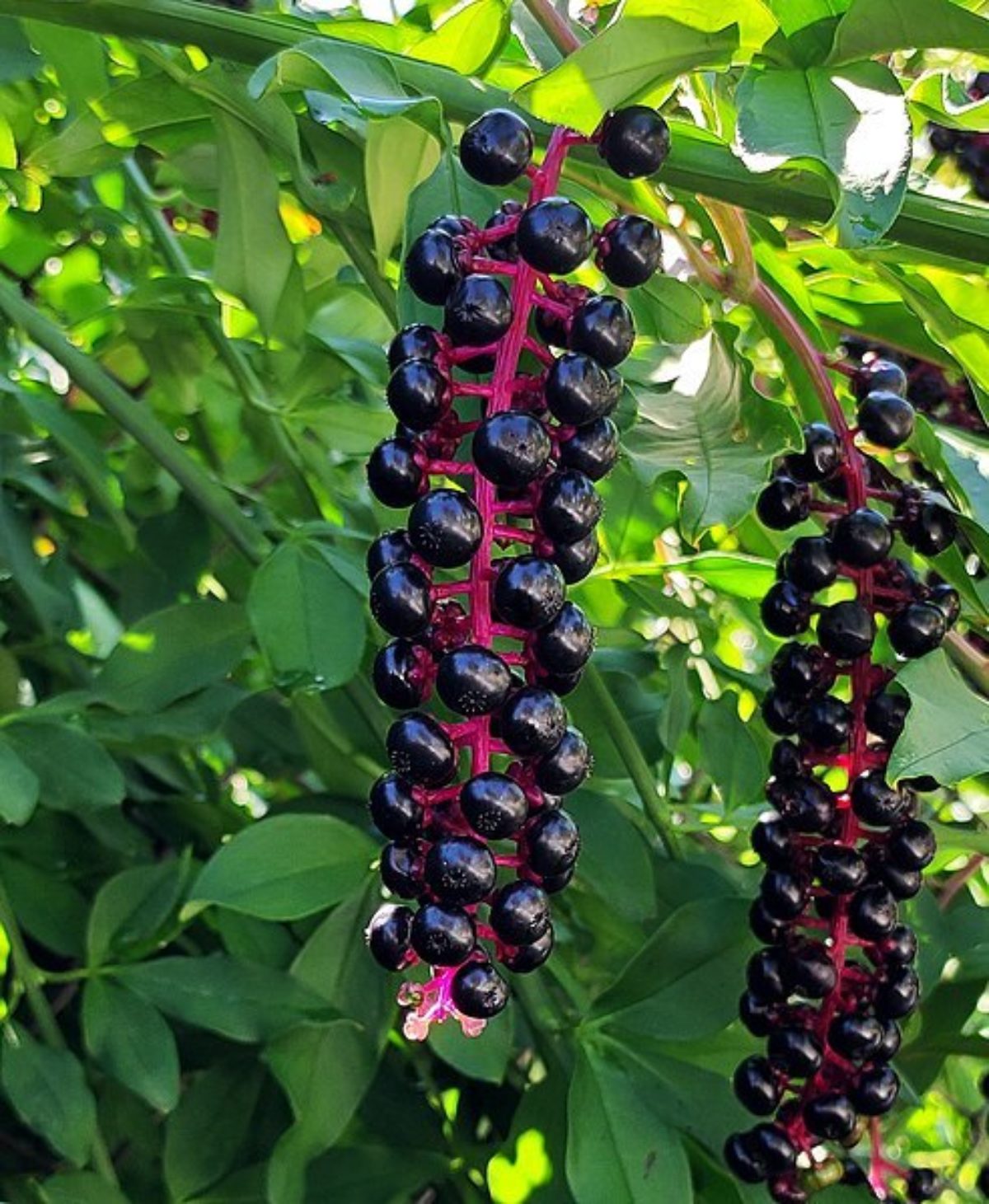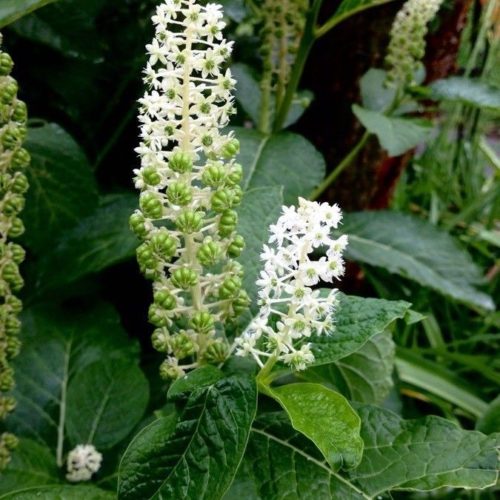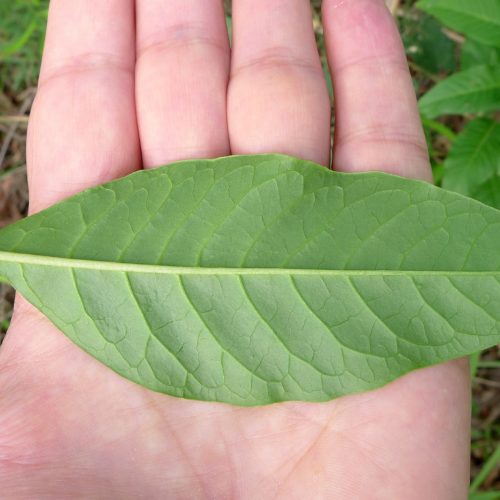Pokeweed
Phytolacca americana

Family: Phytolaccaceae
Other Common Names: American pokeweed, poke sallet, dragonberries, inkberry
Weed class: monitor list
Year Listed: 2020
Native to: Eastern and Southeastern North America.
Is this Weed Toxic?:
humans, livestock
Why Is It a Noxious Weed?
This plant is on the monitor list - it is not a listed noxious weed in Washington. Please contact Jennifer Mendoza to report locations or for more information.
How would I identify it?
General Description
Pokeweed grows to 6 to 10 feet tall, but can grow over 20 feet all.
Flower Description
The flowers are white or greenish, and grow from pink racemes, the linear clusters of flowers. Flowers have 5 sepals, no true petals, and 10 stamens
Leaf description
Leaves grow alternately along the stems, and are a darker green on top than on the bottom
Stem description
Often pinkish to red, the stems are partially hollow, not strong, and up to 2 inches wide.
Fruit Seed Description
Purple-black berries that are a quarter to half an inch wide, each having 6-12 small seeds inside
Where does it grow?
Pokeweed grows in open areas, along fence rows, as well as forest edges, where birds are likely to roost. Burke Herbarium has information on some locations it has been found in Washington State.
How Does it Reproduce?
Seeds are spread readily by birds, who are attracted to the bright berries.
How Do I Control It?
Please refer to the PNW Weed Management Handbook, or contact your county noxious weed coordinator.






